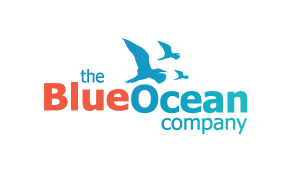“We tend to focus too much on short term operational emergencies, and as a result we lose focus on our long term tactical and strategic issues. Time spent on operational issues – oftentimes problem solving – takes up a lot of bandwidth and prevents time allocation for reflection about the future.”
– Head of Global Learning, Healthcare Organisation
Build a Strategic Capabilities Network
From our work with other clients, what is often missing is the definition of the capabilities that need to be built (both long and short-term) in operations to implement the strategy and achieve the intended results. Corrective actions must be managed separately.
The first step is to build a strategic capabilities network (SCN). The SCN consists of three elements:
1. A strategic value proposition that states what the organisation must achieve to offer value to its clients, expressed as strategic business objectives
2. A set of business capabilities that defines what the organisation needs to build in order to achieve the value proposition or business objectives
3. A number of capability enablers or resources that are what the organisation must build in order to implement the capabilities and make sure they actually deliver the intended results. These enablers are defined as resources because they represent the process, knowledge, organisation and technology assets of the organisation.
It is essential for the organisation to allocate specific change management resources and to build the appropriate governance structures for these intiatives, that will be both short and long term to move forward. These must be updated on a regular basis.
’Emergencies’, meaning process corrections or getting rid of defects in existing processes that are not related to new capabilities, should be managed and solved as separate intiatives with dedicated resources wihtin a distinct governance structure. This will avoid the confusion beween strategy implementation and quick fixes in existing processes.
We suggest to revisit the governance structure (hierarchy as well as processes) and make certain you have the right qualifications for each level. Set deployment and follow up processes accordingly.
Focus on Leadership and Governance
1. Workshop with Executive Team to determine leadership and governance principles for your organisation in the future. (This workshop is very critical, and requires extensive preparation.)
2. Define leadership capabilities (Terms of Reference – TOR) based on workshop outcomes. We suggest using Lominger 360.
3. Assess leadership capabilities — e.g. by assessment centers combined with Lominger – and determine the leaders with capabilities to drive your organisation into the future.
4. Re-organise according to leadership capability assessment and deploy new governance structure.
5. Start monitoring (e.g. engagement surveys) and coach managers on time allocated to management and leadership, and operational versus tactical and strategic issues.
